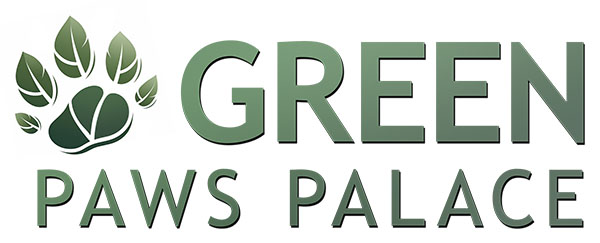Good Eats, Green Treats: A Guide to Organic Pet Food
Alternatives
As pet owners, our furry friends’ health and well-being are of utmost importance. A significant aspect of keeping our pets happy and healthy is their diet. With the global pet food market expected to reach $128.4 billion by 2025, the demand for organic and eco-friendly pet food options has never been higher. In this article, we’ll explore the global pet food market, the growing popularity of organic and eco-friendly pet food options, and the benefits they offer to pets and the environment.
Understanding the Global Pet Food Market
The pet food market comprises various segments, including dry food, wet food, snacks, and specialty diets for dogs, cats, and other companion animals. The increasing number of pet owners worldwide, coupled with a growing awareness of pets’ nutritional needs, has driven significant growth in this market. Factors like urbanization, increased disposable income, and a shift in attitudes towards pets as family members have also contributed to the expansion of the pet food industry. As consumers become more conscious of their pets’ dietary requirements and the impact of pet food production on the environment, there has been a surge in demand for organic, natural, and eco-friendly pet food options. This trend reflects a broader movement toward healthier, more sustainable living, extending beyond human nutrition to the diets of our beloved pets.
The Importance of Organic and Eco-Friendly Pet Food Options
- Improved Pet Health and Nutrition
Organic pet food is made from high-quality, natural ingredients without the use of artificial additives, preservatives, or genetically modified organisms (GMOs). These ingredients are not only more easily digestible for pets but also provide better nutrition and overall health. Organic pet food options often include higher levels of essential nutrients like protein, vitamins, and minerals, as well as natural antioxidants that support a robust immune system.
- Reduced Exposure to Pesticides and Chemicals
Pets fed an organic diet are less likely to be exposed to harmful pesticides, herbicides, and other chemicals commonly used in conventional agriculture. Reducing exposure to these toxins can lead to a decreased risk of chronic health issues, such as allergies, digestive problems, and even certain types of cancer.
- Better Taste and Palatability
Organic pet food options often use fresh, high-quality ingredients, which can make the food more appetizing and enjoyable for pets. A tasty, nutritious diet can encourage picky eaters to consume the nutrients they need and enhance pets’ overall quality of life.
- Environmentally Sustainable Production Practices
Eco-friendly pet food options prioritize the use of sustainable ingredients and production practices that minimize the environmental impact of pet food manufacturing. This may include utilizing locally-sourced ingredients, reducing packaging waste, and minimizing carbon emissions. By choosing eco-friendly pet food options, pet owners can help reduce their pets’ environmental footprint and contribute to a more sustainable future for all.
- Ethical and Humane Treatment of Animals
Many organic and eco-friendly pet food brands prioritize animal welfare and adhere to strict guidelines for the ethical and humane treatment of animals used in their products. This may include cage-free or free-range livestock, humane slaughtering practices, and responsible sourcing of ingredients. By choosing pet food options that prioritize animal welfare, pet owners can support ethical and humane practices in the pet food industry.
The Growing Popularity of Organic and Eco-Friendly Pet Food Options
The shift towards organic and eco-friendly pet food options is driven by several factors, including:
- Increased Consumer Awareness
As pet owners become more educated about their pets’ nutritional needs and the environmental impact of pet food production, they are more likely to seek out organic and eco-friendly options. Social media and other digital platforms have played a significant role in raising awareness and promoting the benefits of organic and eco-friendly pet food, making it easier for consumers to make informed choices.
- Rise in Pet Health Issues
With an increase in pet health issues, such as obesity, diabetes, and allergies, many pet owners are turning to organic and eco-friendly pet food options as a means to improve their pets’ overall health and well-being. These diets are often free from artificial additives, preservatives, and fillers, which can contribute to health problems in pets.
- Growth of the Organic and Eco-Friendly Market
The overall organic and eco-friendly market has experienced tremendous growth in recent years, driven by consumer demand for healthier and more sustainable products. This trend has extended to the pet food industry, with an increasing number of brands offering organic and eco-friendly options.
- Regulatory Support and Certification
The growth of the organic and eco-friendly pet food market is also supported by regulatory bodies and certification programs that ensure the quality, safety, and sustainability of these products. Certifications like USDA Organic, Non-GMO Project Verified, and Certified Humane provide consumers with confidence in their pet food choices and help drive demand for organic and eco-friendly options.
Making the Switch to Organic and Eco-Friendly Pet Food Options
If you’re considering making the switch to organic and eco-friendly pet food for your furry friend, here are some tips to help you get started:
- Do Your Research
Learn about the benefits of organic and eco-friendly pet food options, and understand the specific dietary needs of your pet. Consult with your veterinarian to ensure that you’re making the best choice for your pet’s health and well-being.
- Choose a Reputable Brand
Select a pet food brand that prioritizes high-quality, natural ingredients, and sustainable production practices. Look for certifications like USDA Organic, Non-GMO Project Verified, or Certified Humane to ensure that the brand meets rigorous standards for quality, safety, and sustainability.
- Transition Slowly
When switching your pet’s diet, it’s essential to make the change gradually to avoid digestive issues. Start by mixing a small amount of the new organic or eco-friendly pet food with your pet’s current food, and gradually increase the proportion of the new food over a week or two.
- Monitor Your Pet’s Health
Pay close attention to your pet’s overall health and well-being as you transition to an organic or eco-friendly diet. If you notice any adverse reactions or health concerns, consult with your veterinarian for guidance.
Our Final Thoughts
The global pet food market is evolving, with an increasing focus on organic and eco-friendly pet food options that prioritize health, sustainability, and animal welfare. By choosing these alternatives, pet owners can provide their pets with a nutritious, eco-conscious diet that supports a healthier future for our furry friends and the planet. At GreenPawsPalace, we’re committed to providing our readers with the latest information and resources on eco-friendly pet care. For more tips and recommendations on organic pet food, sustainable pet toys, eco-friendly bedding, and natural grooming products, visit our website and explore our expert reviews. Together, we can make a paw-sitive impact on the world, one pet at a time!







